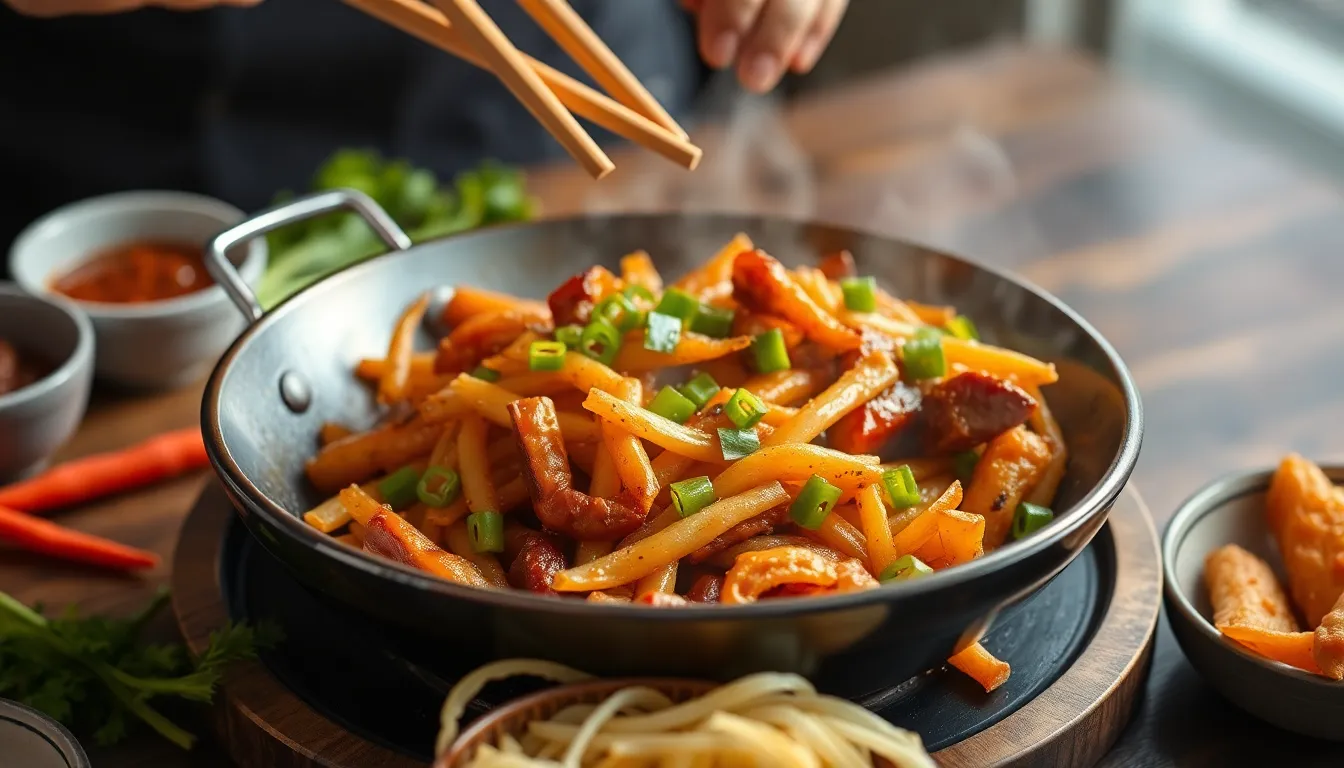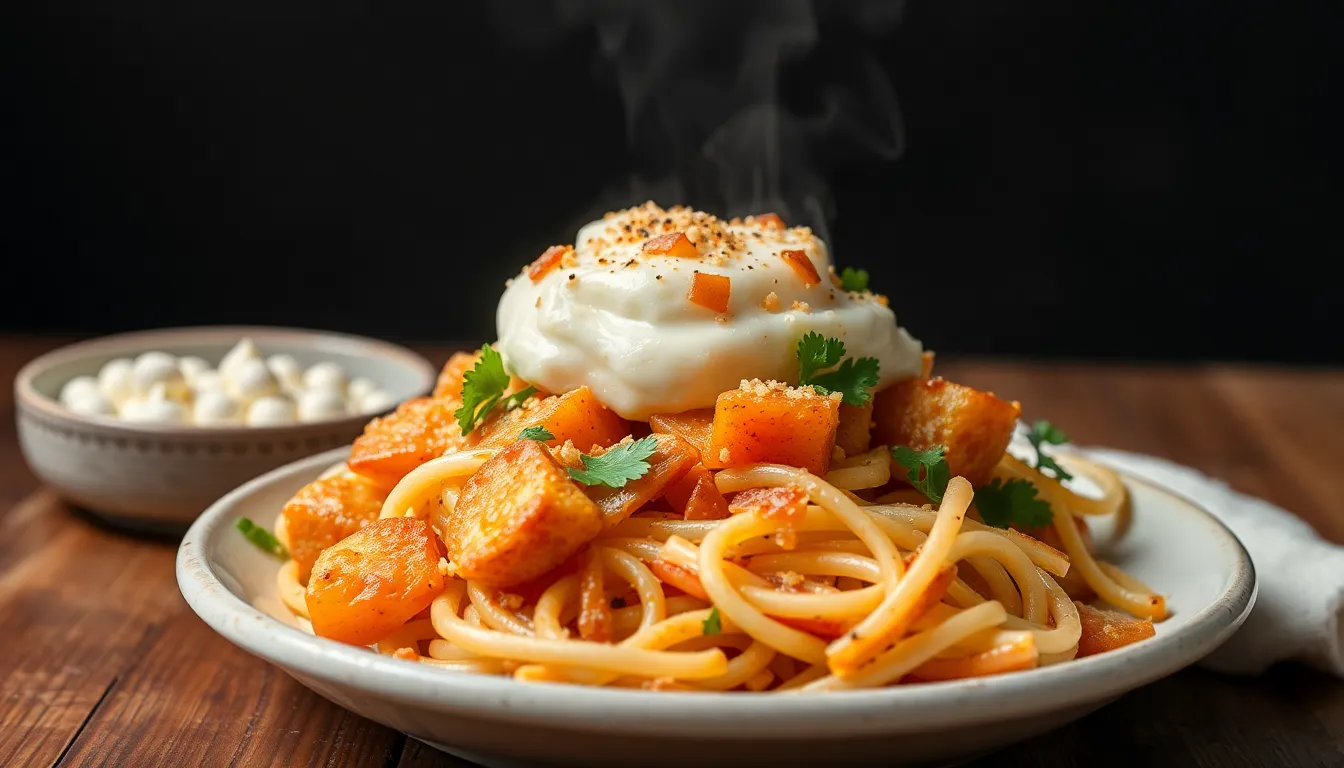Sous Vide Cooking: The Best Techniques for Cooking Haddock
Introduction
Sous vide cooking has taken the culinary world by storm, offering a method that allows for precise temperature control and consistent results. This technique involves sealing food in a vacuum bag and immersing it in a water bath at a carefully regulated temperature. When it comes to cooking fish, particularly haddock, sous vide provides an unparalleled advantage.
Haddock, a popular white fish, is celebrated for its mild flavor and flaky texture. Cooking it sous vide ensures that it retains its moisture and flavor while preventing the all-too-common problem of overcooking. The precision of sous vide cooking is crucial for fish, as even a slight temperature increase can result in a dry, unappetizing meal.
Section 1: Understanding Haddock
Overview of Haddock
Haddock (Melanogrammus aeglefinus) is a member of the cod family and is commonly found in the North Atlantic. It’s a favorite among chefs due to its delightful flavor and versatility in the kitchen.
- Nutritional Benefits: Haddock is low in calories and high in protein, making it an excellent choice for health-conscious individuals. It is also a source of vitamins B6 and B12, selenium, and omega-3 fatty acids.
- Flavor Profile: Haddock has a slightly sweet, mild flavor that pairs well with various seasonings and cooking methods. Its firm, flaky texture makes it ideal for grilling, baking, or frying.
- Best Uses in Cooking: Haddock can be used in a variety of dishes, including fish and chips, chowders, and baked casseroles. Its versatility allows it to shine in both simple and elaborate preparations.
Why Sous Vide is Ideal for Haddock
Sous vide cooking is particularly suited for haddock for several reasons:
- Consistency in Cooking Temperature: The sous vide method allows you to cook haddock at a precise temperature, ensuring it is cooked perfectly throughout without the risk of overcooking.
- Preservation of Moisture and Flavor: Vacuum sealing the fish prevents moisture loss, while the gentle cooking process enhances the natural flavors, resulting in succulent, flavorful haddock.
Section 2: Sous Vide Basics
What is Sous Vide?
Sous vide, French for “under vacuum,” is a cooking method that involves sealing food in airtight bags and cooking it in a water bath at a controlled temperature. This technique has gained popularity among home cooks and professional chefs alike for its ability to produce restaurant-quality meals with minimal effort.
To get started with sous vide cooking, you will need:
- Immersion circulator: This device heats the water and circulates it to maintain an even temperature.
- Vacuum sealer: Essential for sealing the food in bags, preventing water from entering the food.
- Food-safe bags: Either vacuum-sealable bags or resealable freezer bags.
Temperature and Timing Guidelines
Cooking haddock sous vide requires specific temperature and timing adjustments based on the thickness of the fillet. Below are recommended guidelines:
| Thickness (inches) | Temperature (°F) | Cooking Time (hours) |
|---|---|---|
| 1/2 | 130 | 45 |
| 3/4 | 130 | 60 |
| 1 | 140 | 45 |
| 1.5 | 140 | 60 |
Section 3: Preparing Haddock for Sous Vide
Selecting Fresh Haddock
Choosing the right haddock is crucial for a successful dish. When shopping for haddock, consider the following:
- Look for Bright Eyes: Fresh fish should have clear, bright eyes. Cloudy eyes can indicate that the fish is no longer fresh.
- Check the Smell: Fresh haddock should have a mild, ocean-like smell. Avoid fish that has a strong, fishy odor.
- Firm Flesh: Press the flesh gently; it should spring back. If it leaves an indentation, it may be past its prime.
Seasonal considerations also play a role in freshness. Haddock is typically more abundant from February to May, so aim to purchase during these months for the best quality.
Preparation Steps
Once you have selected your haddock, it’s time to prepare it for sous vide cooking:
- Cleaning and Filleting the Fish: If you purchase whole haddock, ensure it is properly cleaned and filleted. Remove any skin or bones if desired.
- Seasoning Options: Season the fish according to your preference. Common options include:
- Salt and pepper
- Fresh herbs (dill, parsley, or thyme)
- Citrus zest (lemon or lime)
- Aromatics (garlic or shallots)
- Vacuum Sealing Techniques: Place the seasoned fillet in a vacuum-sealable bag. Use your vacuum sealer to remove all air, ensuring a tight seal. If using resealable bags, use the water displacement method to remove air before sealing.
Section 4: Cooking Techniques
Basic Sous Vide Cooking Method
Follow these steps to cook haddock sous vide:
- Preheat the water bath using your immersion circulator to the desired temperature based on the thickness of the fish.
- Season and seal the haddock in vacuum bags as described above.
- Submerge the bags in the preheated water bath, ensuring they are fully submerged. You may need to weigh them down.
- Cook for the recommended time based on the thickness of the fillet.
- Once the cooking time is complete, carefully remove the bags from the water bath.
Flavor Infusions
Enhance the flavor of your sous vide haddock by infusing it with additional aromatics. Consider these ideas for flavoring the cooking bag:
- Add lemon slices and fresh dill for a refreshing citrus flavor.
- Use a splash of white wine or broth for extra depth.
- Incorporate spices like paprika or cayenne for a touch of heat.
- Consider adding capers or olives for a briny contrast.
Finishing Techniques
While sous vide cooking results in perfectly cooked fish, a finishing touch can elevate your dish:
- Searing for a Crispy Exterior: Preheat a skillet over high heat, add a bit of oil, and sear the cooked haddock for about 30 seconds on each side to achieve a beautiful golden crust.
- Broiling or Grilling After Sous Vide Cooking: Place the sous vide haddock under the broiler for a few minutes or on a hot grill to add char and flavor.
Section 5: Serving Suggestions
Plating Ideas
Presentation is key when serving sous vide haddock. Here are some plating ideas:
- Arrange the fish on a bed of sautéed greens or grains for added texture and color.
- Top with a light sauce, such as a lemon-butter sauce or a fresh herb vinaigrette, for an elegant finish.
- Garnish with microgreens or edible flowers for a touch of sophistication.
Recommended Sides
To create a well-rounded meal, consider pairing your sous vide haddock with these delicious sides:
- Vegetables: Roasted asparagus, steamed broccoli, or sautéed spinach complement the fish beautifully.
- Grains: Quinoa, wild rice, or couscous can serve as a hearty base that pairs well with the flavors of haddock.
- Sauces: A light dill sauce, lemon caper sauce, or a tangy tartar sauce can enhance the dish.
Conclusion
Sous vide cooking is an excellent method for preparing haddock, ensuring that every bite is moist, flavorful, and perfectly cooked. By understanding the nuances of both the fish and the sous vide process, you can create an impressive meal that dazzles your guests and satisfies your culinary ambitions. With the right techniques and a bit of creativity, sous vide haddock can become a staple in your cooking repertoire.




